Department of Tourism (DOT): What You Need to Know
The Department of Tourism is an agency under the national government of the Republic of the Philippines, responsible for creating and maintaining a favorable environment for the growth of tourism in the country. The DOT seeks to attract tourists to visit the Philippines and to ensure their safety while in the country. This aims to improve economic, social, and cultural value of tourism amongst Filipinos. In this respect, there had been significant improvements in the Philippine tourism industry over the last decade or so.
Also Read: How to Register in One Health Pass Philippines Online – Philippine Travel Pass
As the Department of Tourism is responsible for the country’s development in the tourism industry, its goal is to promote growth and increase opportunities in tourism, contributing to job generation and poverty alleviation in rural areas. However, there’s so much more to this department than what is typically known to mot Filipinos. In this guide, we will take a look at the services of the department and how its programs affect Filipinos and the country’s economy, in general. Keep reading to learn more.
Table of Contents
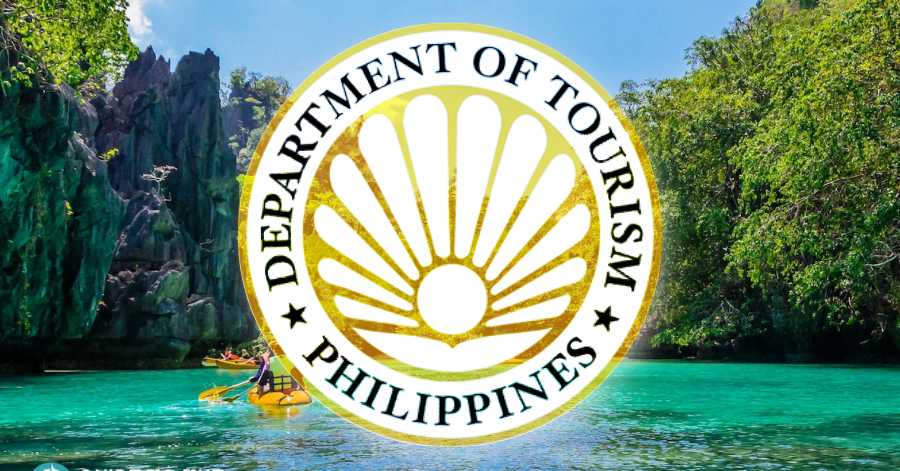

What is the Meaning of DOT?
DOT stands for the Department of Tourism in the Philippines.
What is the Purpose of DOT?
The Department of Tourism (DOT) is the primary planning, implementing, and regulatory government agency tasked to develop and promote the Philippine tourism industry, both domestic and international.
The agency is also tasked to manage, operate, and maintain all government-owned tourism facilities. It is the sole owner of all Philippine tourism-related trademarks, as well as its logo and slogan “It’s more fun in the Philippines.” The DOT is headed by a Secretary who reports directly to the President of the Philippines.
The DOT is mandated to formulate tourism plans and programs to promote, develop and regulate the country’s tourism industry as a major socio-economic activity that generates foreign currency and local employment, and to spread the benefits of tourism to a wider segment of the population with the support, assistance, and cooperation of both the private and public sectors.
The DOT is also responsible for promoting the Philippines as a tourist destination, and to this end has created several tourism campaigns that have become well-known around the world. These include “It’s more fun in the Philippines;” “Pilipinas Kay Ganda;” “Sights, Sounds and Flavors of the Philippines;” and “Traveling with Children”.
The DOT envisions “to position the Philippines as a premier tourist destination in Asia”. This vision aims to make travel an integral part of Filipino life through sustainable tourism development that will create new jobs for Filipinos while conserving heritage sites and protecting cultural identities.
In its commitment to serve its purpose, the department is working with the following agencies:
Duty-Free Philippines Corporation: a government-owned and controlled corporation which operates the country’s airports and seaports. The company is engaged in the sale of duty-free goods to foreign nationals who are transiting or on a stopover in any of its facilities. It also operates retail stores at Ninoy Aquino International Airport (NAIA) Terminal 1, NAIA Terminal 2, NAIA Terminal 3, Clark Intl. Airport and Mactan-Cebu Intl. Airport.
Intramuros Administration: the agency responsible for the administration, promotion, and development of Intramuros as one of the country’s tourist destinations.
National Museum : the government agency mandated to preserve, develop, and promote Philippine history and culture through its collection of artefacts, books, documents, and other materials related to Filipino heritage.
National Parks Development Committee: the agency responsible for the administration, development, promotion and protection of all national parks and other protected areas in the country. The committee is also tasked with promoting ecotourism activities that are consistent with preserving the natural resources found in these areas.
Nayong Pilipino Foundation: the government agency mandated to manage and develop the country’s tourism infrastructure through its Nayong Pilipino Parks, a network of theme parks showcasing Philippine culture and heritage. The foundation was formed in 2002 as a subsidiary of the DOTC.
Philippine Commission on Sports Scuba Diving: the government agency tasked with promoting and protecting the interests of recreational divers in the Philippines. The PCSSD is also responsible for regulating scuba diving activities in all Philippine waters and for ensuring that divers are properly trained and equipped before engaging in these activities.
Philippine Retirement Authority: the government agency tasked with managing the country’s pension and retirement funds. The PRSA was created by virtue of Executive Order No. 386, which was issued by former President Fidel Ramos in 1996.
Tourism Infrastructure and Enterprise Zone Authority (TIEZA): the agency that oversees the development of tourism infrastructure and enterprise zones in the Philippines. TIEZA is tasked with promoting sustainable tourism, managing public-private partnerships, developing private property for tourism purposes, and providing assistance to investors interested in setting up new businesses in the country.
Tourism Promotions Board Philippines: the entity that promotes tourism in the Philippines. The Tourism Promotions Board of the Philippines is a government agency under the Department of Tourism. It was created through Executive Order No. 546, which was signed by former President Fidel Ramos on June 21, 1995.
Brief History
The Philippine Travel & Tourism Association was established in 1950 to promote the country as a major travel destination. In 1956, the Board of Travel & Tourist Industry was established by Congress as a law following the Integrated Reorganization Plan of 1972.
The following year, the Department of Commerce and Industry was merged with the Trade and Tourism Department to form a new agency known as the Philippine Tourism Commission. The objective of the commission is to oversee the development of the tourism industry in the country.
In 1973, President Ferdinand Marcos established a new Department of Tourism, which was composed of two separate agencies. One of these was the Philippine Tourism Authority, while the other was the Philippine Convention Bureau. The new agency was then renamed the Ministry of Tourism. The structure of the department was changed following the implementation of the 1973 Constitution, which provided for the division of government.
In 1986, President Corazon Aquino signed Executive Order 120 and 120A, which reorganized the Department of Tourism. The Convention Bureau was then renamed the Philippine Convention & Visitors Corporation. The Intramuros Administration was also included in the department. In 1998, the Tourism Department was instrumental in celebrating the country’s independence from Spain.
In 2003, the Department of Tourism launched the World Wide Opportunities for Philippines (WOW Philippines) project, which was under the leadership of Senator Richard Gordon.
The passage of Republic Act 9593 in 2009 was regarded as the most significant event in the tourism industry of the Philippines.
Functions and Responsibilities of DOT
The Department of Tourism is responsible for promoting tourism in the Philippines. It does this by developing and managing tourist spots, as well as promoting them through advertising campaigns. The department also regulates the industry to ensure that all businesses are operating within the law.
Office of the Secretary
The Office of the Secretary is responsible for providing leadership and direction to the Department of Tourism. It is also responsible for developing policies and programs, reviewing the effectiveness of the Master Plan, and advising the President on all matters related to the tourism industry.
Tourism Promotions Sector
The Department of Tourism’s tourism promotion sector is responsible for promoting the Philippines as a preferred tourist destination. It is also responsible for developing and implementing marketing programs and promotional activities that are geared toward increasing the country’s tourism profile. It also oversees the department’s overseas field offices that are responsible for enhancing the tourism promotion program of the country.
Tourism Services and Regional Offices Sector
The sector is responsible for ensuring that the various services and facilities of tourist establishments are maintained and operated in a manner that is consistent with international standards. This includes setting uniform standards for the quality of service and ensuring that the establishments are following proper safety and environmental practices.
This division is also responsible for overseeing the implementation of the department’s policies and programs, as well as maintaining the effectiveness of the department’s regional offices.
Planning, Product Development and Coordination
The division is responsible for developing and implementing the department’s Master Plan, as well as its various component programs. It is also responsible for monitoring the implementation of the plan and developing new investment opportunities that will benefit the tourism industry.
Internal Services Sector
The division’s various sections provide effective and efficient services to the Department of Tourism, which ensures that its operations are conducted in a legal and ethical manner. These include human resources management, information technology services, general services administration, and budgetary management.
The Department of Tourism is responsible for the following:
-To formulate and implement plans and policies on tourism development in coordination with other government agencies involved in tourism promotion.
-To provide direction, supervision and control over the performance of all tourism-related activities by local government units (LGUs) within their respective territorial jurisdiction.
-To formulate and implement policies on the development and promotion of international tourism.
-To exercise supervision over the Philippine Tourism Authority (PTA), including its local offices.
-To coordinate with other government agencies concerned with tourism development in order to ensure that their policies will not be inconsistent or conflicting.
Laws enacted by the DOT
-Republic Act No. 9183 (Tourism Act of 2004), which provides for the establishment of a National Tourism Promotion Board and a Tourism Infrastructure and Enterprise Zone Authority;
-Republic Act No. 7916 (Tourist Attractions Development Act of 1995) is aimed at promoting tourist attractions development in the country through its provision on incentives to investors;
-Republic Act No. 7593 (An act providing for the establishment of an inter-island linkage system);
-Republic Act No. 7591 (An act establishing the Philippine Tourism Authority); and
-Senate Bill No. 1526 (Tourism Development Fund Act of 2009).
List of Programs and Services of DOT
The Department of Tourism (DOT) is the government agency responsible for promoting and developing the Philippine tourism industry. It is headed by a Secretary of Tourism appointed by the President of the Philippines.
The DOT has several programs and services, namely:
International Inbound Marketing Program
International Inbound Marketing Program is a service that promotes Philippine tourism to foreign markets. It aims to attract more international tourists to visit the country and spend their money here. This program also helps in promoting local tourism products, services, and events overseas so they can be known by international travelers.
Inbound Marketing Support Services
The Inbound Marketing Support Services is a program that helps develop marketing strategies for the Philippine tourism industry. It also assists local government units (LGUs) and private companies in developing their tourism products, services, and events.
The program also supports the development of a brand identity for Philippine tourism. It aims to establish the country as a prime destination for international visitors by ensuring enough travel-related products and services are available in the market.
Outbound Marketing Program
The Outbound Marketing Program aims to promote Philippine tourism in key markets abroad. It also provides support services for local travel agencies and tour operators. The program helps set up trade shows, road shows, and other events that allow local tourism stakeholders to showcase their products or services to international visitors.
Marketing Research and Intelligence Division
The Marketing Research and Intelligence Division (MRID) is the central marketing research unit of the Department of Tourism. It provides business intelligence to help guide the Department’s marketing strategies and plans. The division conducts market surveys, researches trends in tourism demand, and analyzes data on visitor arrivals by country of origin.
Information Technology Center, Inc.
The Information Technology Center, Inc. (ITC) is the IT arm of the Department of Tourism. It provides information technology services to multiple government agencies, including the DTI and other departments under the DOTr, such as CICT and CAAP. The division also handles e-commerce systems for both domestic and international travelers.
Tourism Promotions Board
The Tourism Promotions Board (TPB) is the government agency responsible for promoting tourism in the Philippines. It implements various projects and programs that aim to boost tourism arrivals and generate more revenue from the industry. The TPB also manages advertising campaigns, such as “It’s More Fun in the Philippines”, which aims to increase awareness of Philippine destinations among international travelers.
Undersecretary for Tourism Program Management Office
The Undersecretary for Tourism Program Management Office (TPMO) is an agency under the Department of Tourism that oversees the implementation of various programs and projects. The TPMO also monitors the activities of other government agencies involved in tourism, such as CAAP, TPB, and DOT. Its main functions include creating tourism development policies and monitoring other agencies’ implementation.
World Trade Center Manila
The World Trade Center Manila (WTCM) is a business-centered building located along Pasay Road in Makati, Philippines. It is one of the most prominent landmarks in Metro Manila and is currently the country’s fourth tallest building. The building houses several shops, restaurants and offices that cater mainly to foreign companies doing business in the Philippines.
– SERVICES –
Check Payables : The agency’s payables or obligations to its creditors can be made through the issuance of modified disbursement system checks or government checks. These checks are usually issued after the approval of related documents.
Collection of Payments for Accreditation and Training/Fees/Bid Documents : All payments for the various services and activities of the Department of Tourism, including the accreditation and training, must be made in cash or check. These can be made through the following procedures: Order of Payment from the Accounting Division or the Accreditation Office.
Endorsement for Special Investor’s Resident Visa : -The service of the DOT endorsement saves you time and money because it gets you a resident visa without having to go back to your home country. You will be able to travel in and out of the Philippines with no problem as long as your visa is valid.
Endorsement of Tourism Development Project to the Board of Investments : The DOT endorsement of a tourism development project to the BoI is an essential step in getting a visa for your foreign investor. The BoI will help you decide which projects are eligible for investment by foreigners and how much money can be invested. If approved, you will get a certificate of investment eligibility that shows that the project has been approved. This document must be submitted with all other documents when applying for your visa at the Philippine embassy or consulate in your home country.
Endorsement for Tourism Road Infrastructure Program (TRIP) Proposal : The DOT also has a Tourism Road Infrastructure Program (TRIP), which is designed to improve the country’s tourism infrastructure through the construction of roads, bridges and flyovers. If you have a TRIP proposal and need an endorsement from the DOT for funding purposes, you will have to submit your proposal in person at any DOT office or send it via mail. The application form can be downloaded from the DOT website.
External Communications Handling : If you are a foreign company that wishes to set up an office in the Philippines, you will have to register with the SEC as an External Communications Handling (ECHC) agent. This is a requirement under Republic Act No. 1067 or the Securities Regulation Code of 2000. Once registered, your company will be able to provide services in relation to foreign investment into the country and communications between investors and their local partners.
Freedom of Information (FOI) Requests : If you are a foreign company, you may have to deal with Freedom of Information (FOI) requests. These are requests for documents that can be made by anyone who is interested in obtaining information about the government’s activities and policies. The government can reject these requests if they relate to “classified” matters or if providing the requested information would pose a security risk.
DOT Internship Application : Students who are interested in working as an intern with the Department of Tourism can apply online or by walk-in applications. To be eligible, you must be a Filipino citizen, have finished at least one year of college education, and speak English fluently. The application process involves submitting your resume and cover letter outlining why you would like to work with the DOT.
Issuance of Certificate of Tax Withheld : To get a Certificate of Tax Withheld, you need to submit an application form and pay the required fees. The DOT will then issue a certificate for you within three working days. This document is proof that your taxes have been withheld from your payment.
LDDAP/ADA Payables : To get LDDAP/ADA payables, you have to register with the DOT and apply for a license. After that, you will receive a list of documents needed to complete your application. You will then submit these documents and pay the required fees in order to get a license from the department.
Maintenance of Databank of Property Offerings : You need to maintain the databank of property offerings, which will be updated as soon as a new listing is added or an existing one is changed. You are also responsible for ensuring that all information in this database is accurate and up-to-date.
Media Coverage Requests : The Department of Tourism has a procedure for providing media and communication support to its various offices. These include its regional offices and other tourism-related agencies.
Payment through Checks : The agency’s obligations or payments to its creditors can be made through the use of a modified disbursement system, which is also known as government checks. These checks are issued after the approval of various documents.
Processing of Application for Vacant Position : The HR process for the recruitment of internal and external candidates for vacant positions is carried out according to the requirements of the ORAOHRA. As of 2017, the deadline for filling up positions has been set at nine months.
Readily Available Photos, Videos, and/or Reports Requests : The Department of Tourism’s media and communications department is responsible for providing a variety of media and communication services to its various offices.
Statistics Technical Assistance : The procedure for approval of requests for statistical data related to tourism is established by the Department of Tourism. It allows employees and other individuals to request such data.
Technical Assistance to Local Government Unit for Tourism Development Projects : The procedure for approval of a local government’s request for assistance in developing tourism infrastructure is outlined in this document.
Video: Department of Tourism-Philippines INFOMERCIAL
Here is an infomercial discussing the overview and Governance Performance Task of the Department of Tourism.
The Department of Tourism is responsible for promoting the Philippines as a tourist destination and for overseeing the country’s tourism industry. The department is headed by a Secretary of Tourism, who is a member of the Cabinet.
The department is tasked with developing and implementing policies and programs to improve the competitiveness of the Philippines as a tourist destination. It is also responsible for promoting the country’s tourism industry, and for regulating the tourism sector.
The department has several key units, including the Tourism Promotions Board, the Tourism Infrastructure and Enterprise Zone Authority, and the Philippine Tourism Authority. These units work together to promote the Philippines as a tourist destination and to develop and implement policies and programs to improve the country’s tourism industry.
Frequently Asked Questions
1. what is the role of the department of tourism in the hospitality industry.
The responsibilities of field offices include overseeing the activities of their staff members and providing them with the necessary information to make informed decisions. They are also responsible for the classification and approval of hotels and restaurants.
2. Who are the officers of the Philippine Department of Tourism?
The Department of Tourism is headed by Secretary Bernadette Romulo Puyat. Her deputies are Assistant Secretary for Policy and Planning Benito Bengzon Jr. and Assistant Secretary for External Affairs Rene Tingzon.
3. What are the functions of the DOT?
The DOT’s main functions are to promote and develop the country’s tourism industry; formulate policies and programs that will attract tourists; coordinate with other government agencies, local governments and private entities in order to implement these policies; conduct research on tourism-related issues, and provide information about the Philippines’ attractions to foreign tourists.
4. What are some achievements of the DOT?
The DOT has successfully attracted more foreign tourists to the Philippines. In 2017, the country welcomed almost 10 million visitors—a record high since it began recording tourist arrivals in 1952. The DOT also launched several projects that support the Philippine tourism industry, such as the “It’s More Fun in the Philippines” campaign in 2012 and its website, VisitPhilippines.com; the creation of the Tourism Infrastructure and Enterprise Zone Authority (TIEZA) in order to help develop tourism-related infrastructure; and the establishment of the Department of Tourism Academy (DOT Academy) to train local government officials, travel agents, and other stakeholders.
5. What are the roles and responsibilities of a tour guide?
Tour guides are responsible for providing travelers with information about the places they visit. They should also be able to manage groups and individuals, act as an intermediary between clients and local authorities (such as police officers), and make sure their clients have a memorable experience.
6. What steps should I take to become a licensed tour guide?
You should first make sure that you’re eligible for a tour guide license. You can apply for one at the Tourism Academy (DOT Academy) or the Department of Tourism (DOT).
7. Do I need a license to be a tour guide?
Yes. You will need to apply for a license from the Tourism Academy (DOT Academy) or Department of Tourism (DOT). What are the requirements for becoming a licensed tour guide? First, you must be at least 18 years old. Next, you should have completed a course on tourism in an accredited school or university. You should also pass the licensure exam and submit your application form with all necessary documents (including proof of citizenship).
8. Where can I apply for accreditation as a Tour Guide, Tour Escort or Tour Conductor in PH?
You can apply for accreditation at the Department of Tourism (DOT) or the Tourism Academy (DOT Academy).
9. How is my Tour Guide license printed and issued by the DOT?
Your license will be printed in a booklet form, which you can use as proof of your accreditation. The license is valid for one year from the date of issue and can be renewed upon submission of additional requirements.
10. Is there an expiration date on my Tour Guide license?
Yes. Your license will be valid for one year from the date of issue and can be renewed upon submission of additional requirements.
The Department of Tourism (DOT) is the government agency responsible for promoting tourism in the Philippines. It is under the Office of the President and led by Secretary Bernadette Romulo-Puyat. The DOT, which was established in 1959, promotes tourism through various programs and projects, including tourism promotions and marketing strategies, international trade fairs, grants to domestic and foreign travel agencies, airline companies and hotel chains, as well as airport improvements.
One of the biggest challenges facing the DOT is to increase international arrivals. In 2016, about 5 million tourists visited the Philippines; however, this number has yet been reached again since then due to political instability and other issues such as traffic congestion in Manila and increasing crime rates.
The DOT is also tasked with managing travel warnings issued by other countries against traveling to certain areas due to safety concerns or natural disasters. For example, travelers were advised against visiting Boracay Island after it was closed down due to environmental degradation caused by excessive tourism activities in 2018.
Filipinos, including OFWs, benefit from the work of the DOT by receiving more travel advice and tips from the agency’s website and social media accounts. This ensures that travelers are aware of the potential dangers and risks associated with traveling to certain places. The DOT also works closely with the Department of Foreign Affairs (DFA) to ensure that Filipinos abroad are protected from exploitation and abuse.
READ NEXT: PH Hailed as World’s Top Diving Destination, Intramuros Named Top Tourist Attraction
Contact Information
Address : IPO Building, The, 351 Sen. Gil J. Puyat Ave, Makati, 1200 Metro Manila Telephone Number : 0284595200 Website : http://www.tourism.gov.ph/ Facebook Page : https://beta.tourism.gov.ph/
Google Map Location :
Leave a Comment Cancel reply
You must be logged in to post a comment.
Member Login
- Hello Guest!
- View your advertisement (0)
- Advertise Now!
- View your comment (0)
- View your photo (0)
- Upload Photo Now!
- Log In | Register Close Panel
- The Philippines
- The Department
- ASEAN Crisis Mgt
- Influenza A(H1N1)
- BE ACCREDITED
- Planning Workshop
- Travel Shows
- Invest Now!
- Visitor Statistics
- Useful Links
- Photo Archives
- Laws|Rules|Codes
- Video Archives
- USA Visa Service
- Books for Sale
- NTDP 2011-2016
- TEZ Incentives
- Phil Nautical Hwy
- Halal Handouts
- Immigration Issue?
- Rules Travel Agencies
- ASEAN MRA for TP
- TRIPPC 2018
- UNWTO Statistics
- Crisis ComPlan
- ASEAN Standards
- Accreditation System
- Manila Call for Action
- NTDP 2016-2022
- Road Projects 2018

Ads posted: 13,489 Members registered: 11,410 Members view all ads: 19 Visitor Hits: 33,843,972

Chat Online

Announcement
- Secretary’s Corner
- GAD Activities
- GAD Issuances

- Mission and Vision
- Department Structure
- Key Officials
- Citizen’s Charter
- Attached Agencies
- General Info
- Culture & Arts
- People & Religion
- Tourism Industries Products
- Promotional Fair and Events
- Doing Business
- Philippines RIA Pilot Program
- Tourism Demand Statistics
- Standards Rules and Regulations
- Online Accreditation
- Accredited Establishments
- Learning Management System (LMS)
- News and Updates
- Announcements
- Publications
- Bids and Awards

DOT CHIEF: PHILIPPINES RECEIVES 2 MILLION INTERNATIONAL VISITORS; TOURISM RECEIPTS HIT PHP158 BILLION IN THE FIRST THREE MONTHS OF 2024
Manila, Philippines—The Philippines has already received over two million international visitors this month, the Department of Tourism (DOT) reported...
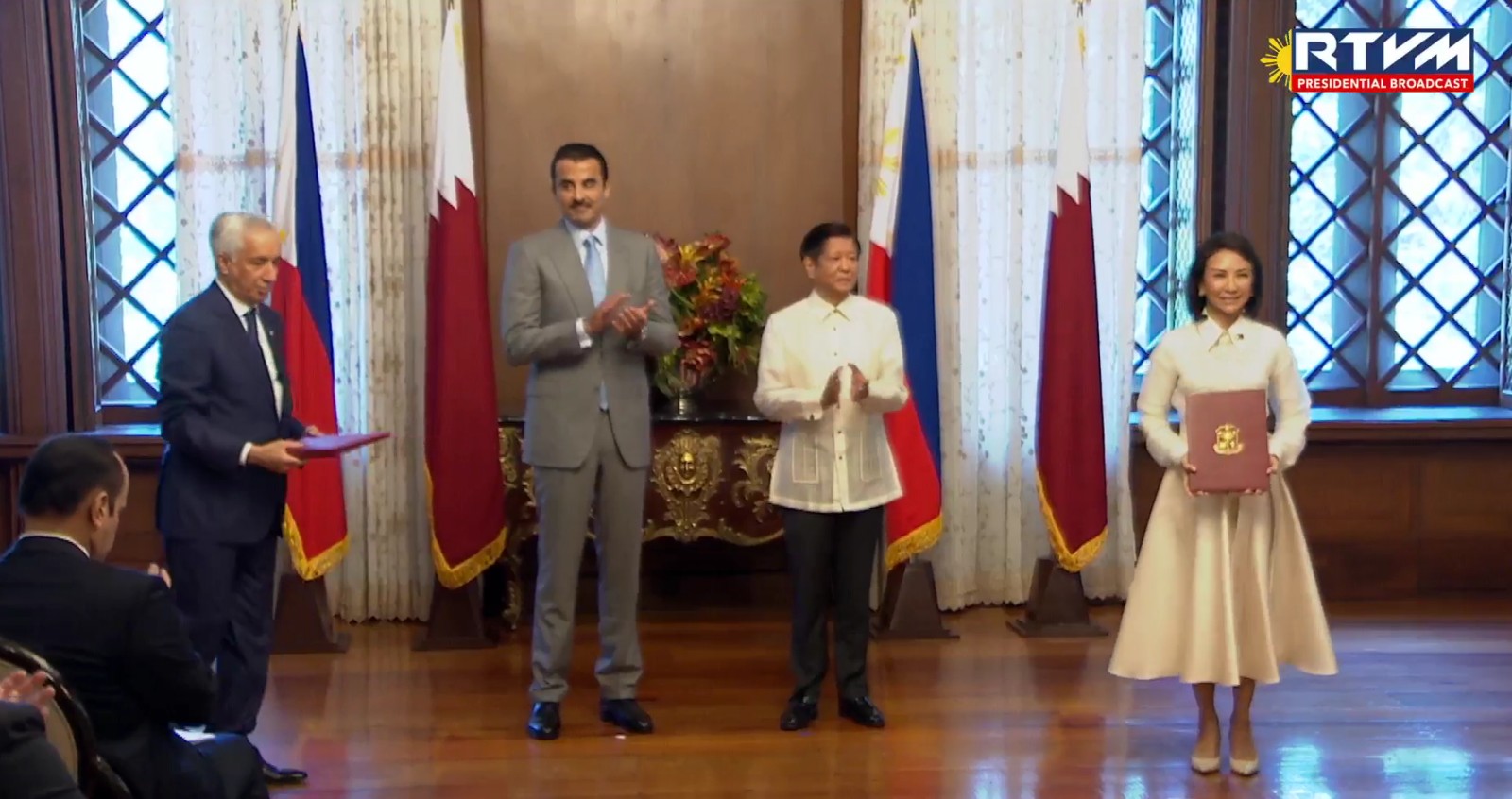
PH FORGES EXPANDED TOURISM TIES WITH QATAR
With the renewal of the Memorandum of Understanding (MOU) between The Philippines and State of Qatar, the two nations...

PBBM LAUDS WINNERS OF DOT’S TOURISM CHAMPIONS CHALLENGE; RAISES FUNDING FOR LGU INFRA PROPOSALS TO P255M
Manila, Philippines—President Ferdinand Marcos, Jr. lauds the Department of Tourism’s (DOT), flagship program, Tourism Champions Challenge, which encourages local...

Accreditations

Published Vacant Position – February 13, 2024
Published vacant position – january 29, 2024, published vacant position – november 3, 2023, published vacant position – august 24, 2023.

Balik Bayani sa Turismo: FAQs – March 2024 issue
Balik bayan sa turismo: briefer – march 2024 issue, on the dot: official dot newsletter – march 2023 issue, on the dot: official dot newsletter – february 2023 issue.

Tourism in the Philippines
Philippine tourism industries, explore by interest, tourism videos.

THE PHILIPPINES IN NUMBERS
100,972,303, 134,107,832, dot attached agencies.
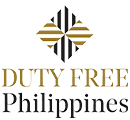
- Open Data Portal
- Official Gazette
- Office of the President
- Sandiganbayan
- Senate of the Philippines
- House of Representatives
- Department of Health
- Department of Finance
- Supreme Court
- Court of Appeals
- Court of Tax Appeals
- Judicial Bar and Council
- Bureau of Internal Revenue
- Bureau of Customs
- Bureau of Treasury
- Bureau of Local Government Finance
History of Philippine Tourism
Ever wonder about the history of tourism in the philippines this can give you a good idea and maybe even say, “woah” you may realize that the origin of tourism in the philippines dates back even before the arrival of the spanish colonizers then you would continue asking why the country slid down from being one of the top tourist destinations in asia to a laggard. it’s kinda sobering, actually. but read on the details to be informed and perhaps entertained..
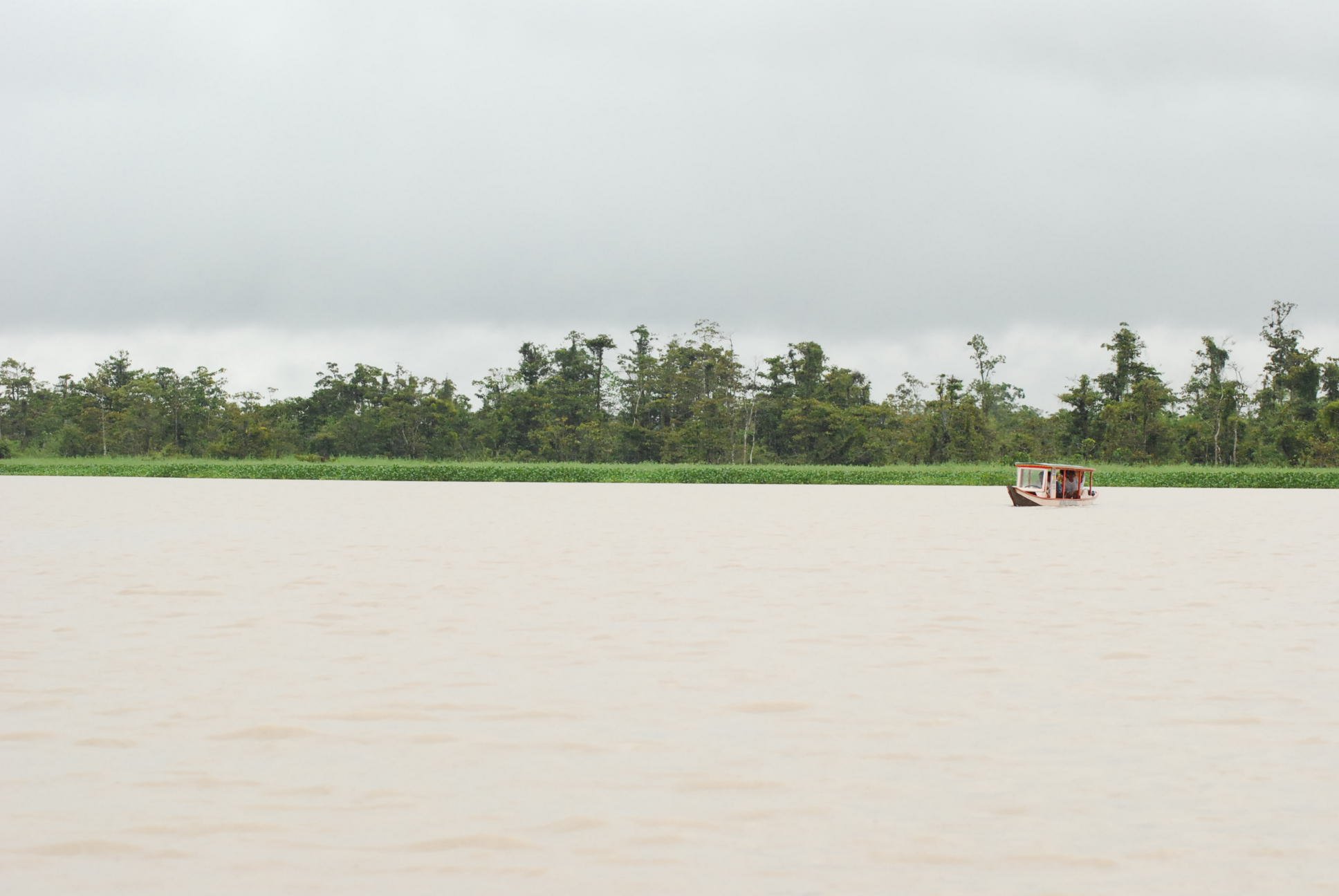
Ready to be blown away?
Let’s read the history of tourism in the Philippines.
1417: The Sultan of Sulu, Paduka Pahala traveled to Beijing to pay tribute to the emperor of China, Zhu Di of the Ming Dynasty. Perhaps we could consider the sultan’s party as the first official travel group from the Philippines. But the sultan died in China while still in that country and the rest of his party stayed there. As regards travel between the two countries, it has been known that Chinese traders had been visiting the Philippines many years prior to the arrival of Spaniards.
1521 - 1898: Spanish colonial era - Travel was limited between islands and coastal areas. The seas were actually considered bridges instead of barriers between different peoples of the Philippines. Inland travel was very limited due to the absence of roads. However, a very interesting interaction between the Cordillera highlands and the Ilocos lowlands had been ongoing. So-called Spanish or pre-Spanish trails were frequently used by the highland communities in order to trade with the lowlanders. Meat, salt, and housewares were the items often exchanged. Local Cordillera elders whom I interacted with told of their houses having extra space for weary travelers who had to travel several days between the Cordilleras and the lowlands and were in need of places to stay for the cold nights. Perhaps such hospitality has been ingrained in the Filipinos.
The Spanish era also made religious pilgrimage popular and as a reason (or excuse) to travel. That culture has continued to be practiced in many communities up to the present day. One such notable pilgrimage was visiting the Church of Our Lady of Peace and Good Voyage in Antipolo, Rizal during the month of May. Pilgrims seeking the Virgin’s blessings and protection would board boats near Quiapo, heading upriver to either Cainta or Taytay. Since the church was located on top of a hill, visitors took transport either in hammocks carried by crews of men or by horse-drawn carriage. After the pilgrimage, some visitors would go bathe in a nearby waterfall known as Hinulugang Taktak (i got this description from the website, tulay.ph).
Privately owned rest houses, such as Malacañan Palace (originally owned by businessman Don Luis Rocha) were used for accommodation by the society elite who went on local pilgrimages.
Mid 1800’s - Spanish colonial authorities introduced innovations such as railroad, electricity and telegram. Manila opened to world trade which opened the door to increasing number of foreign businessmen and diplomats and subsequently also increased the demand for first class accommodation facilities.
1889: The first deluxe hotel, Hotel de Oriente, opened.
1898: United States became the colonial master of the Philippines. American expatriates increased and demand for more hotels increased
1912: Manila Hotel opened. Soon, mineral mining in the Cordilleras resulted to the conversion of Baguio City into a summer vacation destination for American expats and their families. Near Manila, other vacation spots were the hot springs of Los Banos in Laguna and the beaches of Cavite.
First half of 20th century: Limited Visitor arrivals to the Philippines was at the Port Area of Manila.
1935: First trans-Pacific passenger flight from San Francisco was done in 1935 by a huge Pan American Airline flying boat since there was no commercial airport yet in Manila. Each plane could only accommodate 25 passengers.
1937: New Zealand-born businessman Laurie Nielson opened the country’s first civilian airport in Makati City (called then as Nielson Airport and now known as Ayala Triangle).
1941: First flight of Philippine Airlines from Makati to Baguio. Only a few places outside of Manila, such as Baguio and Taal Volcano, were developed specifically for tourism. Public transport such as ships, buses and trains were regarded unreliable and unsafe.
1950: Modesto Farolan, first consul general in Hawaii, set up the Philippine Tourists and Travel Association which was patterned after the Hawaii Visitors Bureau. Its office was in a space in Manila Hotel.
1956: the government set up the Board of Travel and Tourist Industry
1960: The government started keeping records of visitor arrivals. For that year, the country attracted 51,000 visitors.
1966: The first Philippine Tourism Week was held, aimed at promoting domestic tourism and encouraging Filipinos to travel within the country.
1967: The "Visit the Philippines Year" campaign was launched, with the goal of attracting more foreign tourists to the country. The campaign was successful, with tourist arrivals reaching over 300,000.
1968: The Sheraton and the Hilton hotels opened
1969: The Intercontinental opened.
1972: Martial Law was declared and curfew was implemented. Tourism took a direct hit. Domestic tourism became non-existent as Filipinos travel only for the sole reason to visit relatives and friends. Outside the usual holidays when Filipinos can flock to provinces and beach destinations, most would not dare go to far-off places due to the possibility that they be accused of being communist rebels. Foreign visitors were limited to very few destinations such as Manila and environs, Batangas, Cavite, Baguio, Laguna, Ilocos and Banaue in Luzon. Tour programs however were still done in Cebu and some parts of Mindanao, particularly Zamboanga City, Cotabato and Davao in the early ‘70s. However, the birth of Muslim rebellion and the declining peace and order situation put a break on tourism in Mindanao.
1973: 243,000 tourists were recorded.
Mid ‘70s: More hotels were built in Manila and some provincial destinations. These include the Holiday Inn, Hyatt, the Peninsula and the Mandarin Oriental. The government focused on hosting international events such as the hosting of Ms. Universe and the fight between Muhammad Ali and Joe Frazier, which was dubbed Thrilla in Manila.
1977: The University of Philippines opened up the Asian Institute of Tourism, first tourism degree course in the country.
1980: The Philippines breached the 1 million tourist arrivals
1986: Due to the declining political, economic and peace and order situation, the president of the country was deposed and forced into exile. Tourism was totally down on the ground. The tourism office launched the program, Huwag Maging Dayuhan sa Sariling Bayan, which was aimed at encouraging Filipinos to travel around the country. However, very few Pinoys would dare venture into the countryside because of the economic condition of most Pinoys and the still unstable sense of security in many places.
1987: The Philippine government launched the "Philippines: More than the Usual" tourism campaign, which aimed to promote the country's unique culture and natural attractions to international tourists. Outside the few established destinations most of which are located in the environs of Metro Manila, Cebu and Baguio City, domestic tourism was still almost irrelevant.
1987 - 1990: Numerous (seven) violent coup d’ etat were attempted in order to established military junta in place of the government. Although the attempts to grab power all failed, they caused massive impacts to the tourism industry that further set the tourism industry many years backwards. Other Asian countries that used to envy the Philippines started overtaking in terms of development and visitor arrivals.
The tourism industry was having a very hard time recovering that the infrastructure arm of the DOT, the then Philippine Tourism Authority was forced into building basketball courts in some areas as the influencing politicians could only think of basketball courts and local parks for their tourism projects. (In case you’re a little confused, implementing government bodies would be influenced by politicians such as senators and congressmen to allocate funds and projects for their constituents.
1990: A strong earthquake leveled many areas in Luzon. The most affected tourist destination was Baguio City which suffered the collapse of several hotels.
1991: The Philippine Tourism Master Plan was published. It was supposed to guide the development of tourism estates that would rival known tourist destinations abroad. However, land speculations, political issues and government limitations did not allow most of the tourism estates and study areas be developed according to the master plan. Other programs, however, became institutionalized and guided the development and local management of tourism in the country.
1991: The eruption of Mount Pinatubo, one of the largest volcanic eruptions of the 20th century, further impacted the tourism industry in the northern part of the Philippines.
1992: WIth the improved peace and order situation in the country, domestic tourism gained improved traction. More destinations in the provinces opened up for the increasing number of Filipino travelers.
1994: The Department of Tourism launched the "Bring Home a Friend" campaign, which emphasized the country's natural beauty and cultural heritage and the influence of millions of Filipinos scattered in many countries to convince their foreign friends to visit the Philippines. The campaign was successful in attracting more foreign tourists.
1996: Entry of Cebu Pacific and eventual introduction of low-cost carriers in the Philippines. The “Piso” fare campaign of the LCCs almost immediately helped explode the number of domestic tourists in the Philippines.
1997: The Asian financial crisis had a negative impact on tourism in the Philippines, as many foreign tourists cut back on travel. But compared to many other Asian countries whose travel industry was greatly affected, the Philippines did not suffer severely because foreign tourism was not yet a major economic sector in the country. Further, the growth of the domestic market greatly cushioned the impact of the financial crisis. Perhaps the Filipinos were already used to crises that another one did not bother them with their travel plans.
2000: The government launched the "Philippines 2000" tourism campaign, which aimed to attract more high-end tourists to the country. The campaign was successful, with tourist arrivals reaching over two million.
2006: The Department of Tourism launched the "WOW Philippines" campaign, which focused on the country's diverse tourist destinations and unique experiences.
2007: The Holiday Economics was launched. A government program wherein workers would have the chance to have long holidays which allowed them to take longer vacations. No-work holidays that fall on a weekend or Thursday and Tuesday would mean that the paid no-work day would be implemented on a monday or friday. Coupled with the “piso fare” of the low cost carriers, this program proved to be another major influencer of the growth of domestic tourism.
2013: Super Typhoon Haiyan devastated the central part of the Philippines, including many popular tourist destinations such as Boracay and Palawan.
2016: The new government administration launched the "It's More Fun in the Philippines" campaign, which highlighted the country's friendly people, unique culture, and natural attractions.
2017 - 2019: Domestic travelers became an undeniable major force in the tourism industry with more than one trillion pesos of economic redistribution happening in the country in 2019. Many local governments fully adopted tourism as an opportunity for economic growth. Many have even prioritized tourism as their banner program in improving the economic status of their areas.
2020: Taal Volcano erupted greatly disrupted tourism in the country.
Then the pandemic happened. The COVID-19 pandemic had a devastating impact on tourism in the Philippines, with tourist arrivals dropping by over 80% compared to the previous year. The tourism industry was basically at a stand still which lasted for more than two years. Many tourism businesses, including some large hotels were forced to shut down.
2023: Covid-19 seeming to be finally under control. Health and travel restrictions were lifted and destinations started opening their borders. Tourism businesses and stakeholders started picking themselves up with the hope that the travel prior to the pandemic would return the soonest.
This is actually just scratching the surface. There are so many other events that I have failed to include. But at least, we got to get a good glimpse of the travel industry in the Philippines and the challenges that punched it in the face. Let’s hope that everything will become great, eventually.
Also, please keep in mind that while most of the info can easily be found online, a number of them were based on my personal observations when i used to work as a research officer of the Department of Tourism, an academician, and a tourism planning resource person. And I can tell you that it’s really more fun in the Philippines.

How Elon Musk’s Starlink Will Change the Tourism Industry
10 reasons why you should travel while young.

What is the main tourism organization in the Philippines?
The main tourism organization in the Philippines is the Department of Tourism (DOT), which is responsible for promoting, developing, and regulating the Philippine tourism industry.

Table of Contents
Introduction
Background of tourism in the philippines.
The Philippines, an archipelago comprising more than 7,000 islands, has a rich history of tourism, attracting visitors with its stunning natural landscapes, vibrant culture, and warm hospitality.
- Early Tourism: Tourism in the Philippines can trace its roots back to the Spanish colonial era, where the country’s coastal towns became popular destinations for trade and leisure.
- Post-War Era: After World War II, the country’s tourism industry began to flourish, promoting its picturesque beaches like Boracay and historical sites such as Intramuros .
- Modern Tourism: In recent years, the government has invested significantly in tourism infrastructure, creating more accessible transportation and developing eco-friendly resorts to attract international tourists.
Importance of Tourism Industry
The tourism industry is a vital sector in the Philippines’ economy, generating significant revenue, creating jobs, and promoting cultural exchange ,Main tourism organization in the Philippines is DOT.
- Economic Contribution: Tourism is one of the top sources of foreign exchange earnings in the country. In 2019, it contributed approximately 12.7% to the nation’s GDP, signifying its critical role in economic development.
- Employment Opportunities: The industry provides employment for millions of Filipinos, from hotel staff to tour guides. It supports related sectors such as food and beverage, transportation, and arts and crafts.
- Cultural Promotion: Through tourism, the rich cultural heritage of the Philippines, including UNESCO World Heritage Sites like the Baroque Churches and the Rice Terraces of the Philippine Cordilleras , is showcased to the world. The festivals, traditions, and culinary experiences become an essential part of the tourism offering.
- Sustainable Development: The government’s commitment to sustainable tourism ensures that natural resources are preserved, and local communities benefit from tourism revenue. Initiatives like the rehabilitation of Boracay Island are evidence of the dedication to environmental responsibility.
The Main Tourism Organization in the Philippines: Department of Tourism (DOT)
History and formation.
Its formation marked a significant step in recognizing tourism as a vital part of the country’s economic development.
- Early Years: Initially operating as a small unit within other government departments, the DOT eventually became a full-fledged department to oversee the nation’s tourism policies and strategies.
- Legislative Milestones: The passing of the Tourism Act of 2009 further empowered the DOT, strengthening its mandate to promote sustainable and responsible tourism.
Mission and Vision
The Department of Tourism operates with a clear mission and vision to enhance the tourism sector in the Philippines.
- Mission: The DOT’s mission is to promote the Philippines as a world-class tourism destination, showcasing the best of its natural beauty, cultural heritage, and Filipino hospitality.
- Vision: The vision of the department is to become a leader in global tourism, prioritizing sustainability, inclusivity, and innovation. The goal is to provide memorable and enriching experiences for both local and international tourists.
Organizational Structure
The DOT’s organizational structure is designed to facilitate the efficient execution of its functions.
- Central Office: Headed by the Tourism Secretary, the central office coordinates policy-making, planning, and standard-setting.
- Regional Offices: The DOT operates regional offices across the country, implementing programs and projects tailored to the specific needs and opportunities of each region.
- Attached Agencies: Various agencies like the Tourism Promotions Board and the Philippine Tourism Authority work in coordination with the DOT to enhance the tourism experience in the Philippines.
Key Functions and Responsibilities
- Marketing and Promotion: Through international advertising campaigns, participation in travel fairs, and collaboration with travel agencies, the DOT actively markets the Philippines as a must-visit destination.
- Regulation and Accreditation: The DOT sets quality standards for tourism facilities and services, ensuring safety, accessibility, and sustainability.
- Research and Development: Conducting research on market trends, tourist behavior, and industry best practices enables the DOT to adapt its strategies and remain competitive in the global tourism landscape.
- Education and Training: The department provides training programs and educational materials for tourism practitioners, enhancing their skills and knowledge in hospitality management.
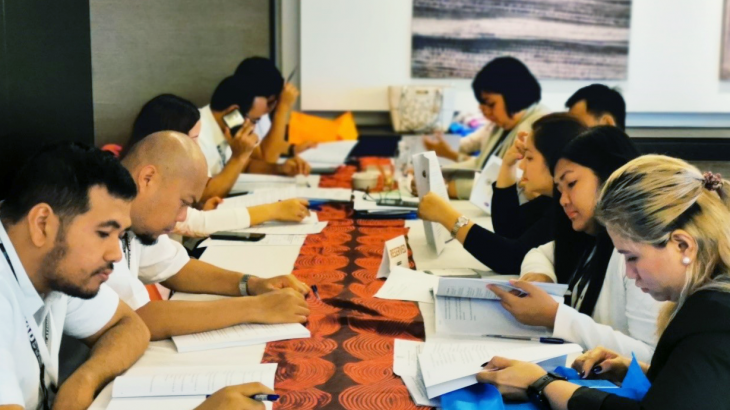
Subsidiary Bodies and Partnerships
The Department of Tourism (DOT) in the Philippines works closely with various subsidiary bodies and engages in partnerships to promote and develop tourism in the country.Main tourism organization in the Philippines is DOT. The following entities play crucial roles in collaboration with the DOT:
Tourism Promotion Board (TPB)
The Tourism Promotion Board is primarily responsible for marketing and promoting the Philippines as a tourism destination. It works on both international and domestic fronts.
- Advertising and Publicity
- Market Research
- Tourism Events Management
- Collaboration with travel agencies and tour operators
Philippine Convention and Visitors Corporation (PCVC)
The PCVC focuses on attracting conventions, business meetings, and trade events to the Philippines, showcasing the country as a viable location for global business activities.
- Convention Bid Preparation
- Meeting Planning and Support
- Marketing to International Meeting Planners
- Coordination with hotels and conference venues
Local Government Units (LGUs) Coordination
LGUs play a vital role in tourism development at the local level. Coordination between the DOT and LGUs ensures alignment of local tourism initiatives with national strategies.
- Development of Local Tourism Plans
- Implementation of DOT Guidelines and Policies
- Maintenance of Local Tourist Attractions
- Coordination with local businesses and communities
Private Sector Collaboration
The collaboration between the DOT and private sectors like hotels, airlines, and travel agencies ensures a cohesive effort in promoting tourism.
- Joint Marketing Initiatives
- Standard Setting and Accreditation
- Investment in Tourism Infrastructure
- Innovation in Products and Services
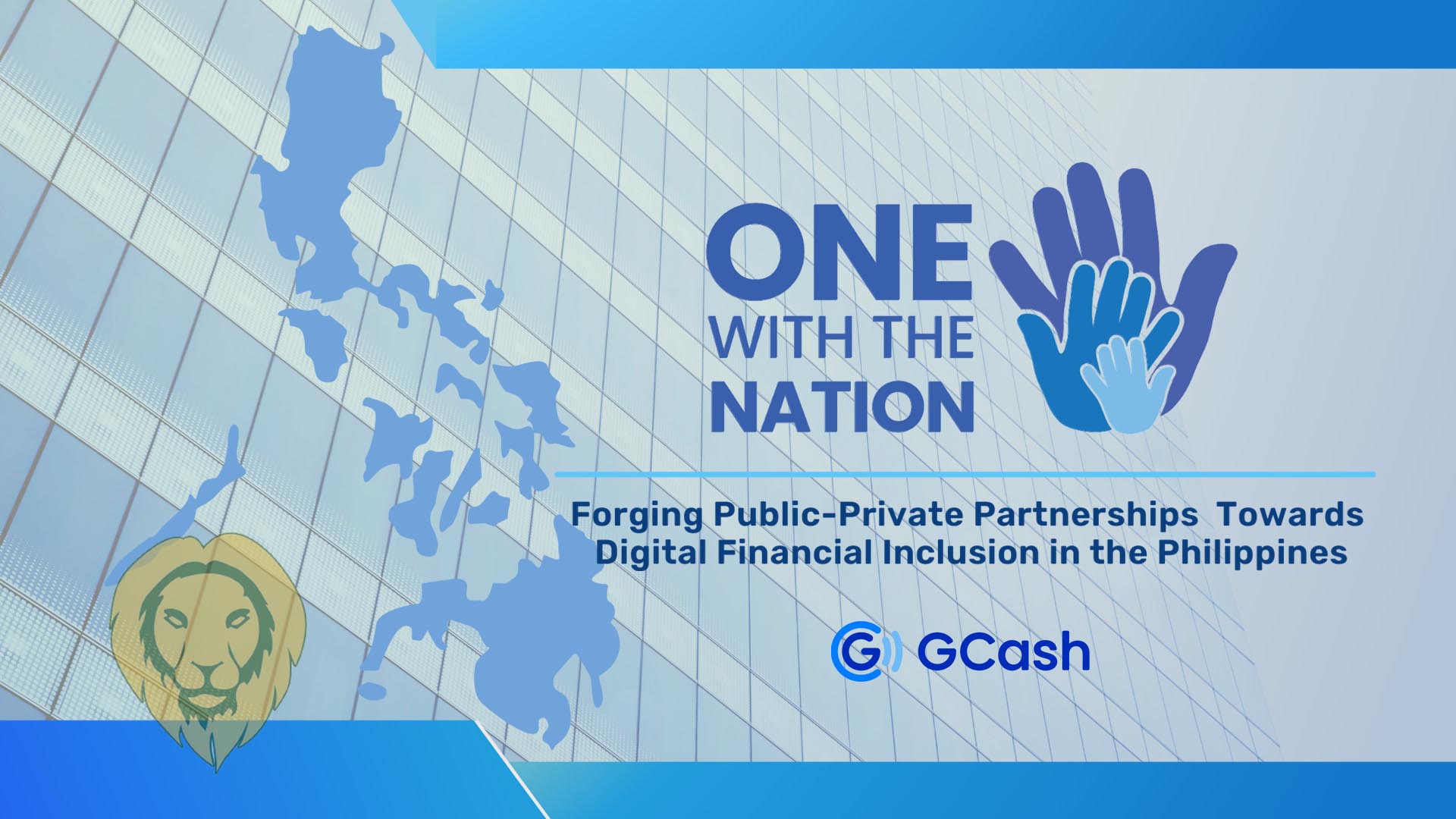
Future Trends and Prospects
The tourism industry in the Philippines is constantly evolving, embracing new trends and looking ahead to future prospects.
Technology and Tourism
The integration of technology is reshaping the way tourism operates, offering enhanced experiences and more efficient services.
- Digital Marketing: Utilizing online platforms and social media to promote destinations and engage with potential tourists.
- Virtual Reality (VR) Experiences: Offering virtual tours of key attractions like the Chocolate Hills or historic sites, providing a taste of the destination from the comfort of home.
- Online Booking and Management Systems: Streamlining reservations, ticketing, and customer management to make travel planning more convenient for tourists.
Sustainable Tourism Initiatives
Sustainable tourism ensures that the natural and cultural treasures of the Philippines remain preserved for future generations.
- Eco-friendly Accommodations: Encouraging hotels and resorts to adopt green practices, such as solar energy, waste reduction, and water conservation.
- Community Involvement: Promoting tourism projects that benefit local communities, preserving their culture and environment.

Global Competitiveness
- Quality Assurance: Regularly assessing and enhancing the quality of services and facilities to meet international standards.
- Strategic Partnerships: Forming alliances with global tourism organizations and multinational corporations to increase the country’s presence in key markets.
- Tailored Experiences: Developing niche tourism products, such as medical tourism or culinary tourism, to attract diverse segments of the global tourist population.
Related Posts
Is tourism high in the philippines, what is the most visited place in the philippines, what kind of tourism is in the philippines, why is philippines rich in tourism.

- ASSOCIATIONS
- CLIMATE CHANGE
- TRAVEL COMPANIES
- ASIA PACIFIC
- MIDDLE EAST
- NORTH AMERICA
- PHILIPPINES
- BANYAN TREE
- NORWEGIAN CRUISE LINE
- PANDAW CRUISES
- PRINCESS CRUISES
- ROYAL CLIFF
- THAI AIRWAYS
- TRAVEL DEALS

Vietjet plots 25% dividend in 2024
Hotel indigo flag flies at the forestias, macau’s iconic hotel central hotel reopens, where are workers taking a break.
GCC travel bookings drive DidaTravel gains
Sarawak serves up pickleball contest
AirAsia Cambodia starts domestic flights
Dusit spotlights hotel expansion
Sarawak hosts tourism resilience training
Are hotels ready to dump harmful chemicals?
Doesn’t get better than a THB100 fare
Thai Vietjet makes Songkran fare splash
Emirates bargains up for grabs
India’s Vistara launches Points Fest
Emirates rolls out fare bargains
Singapore: Top spot in Asia for expats
First trip without Mum and Dad
Is sustainable travel losing its shine?
Vietnam: I’m only here for the beer
Smog and dams a threat to tourism?
Sailing on calmer waters
Is the global travel industry isolating Russia?
Will China reopen outbound travel soon?
Agoda clarifies reviewer privacy rules
Philippines’ DOT sets out 2022 recovery plan
MANILA, 8 September 2021: The Philippines’ Department of Tourism will pursue a 2022 recovery plan with an end goal of a sustainable, resilient, and inclusive tourism industry, the Philippines News Agency reported earlier this week.
Secretary Bernadette Romulo-Puyat presented the plan as part of the DOT’s proposed 2022 budget to the House of Representatives appropriations committee.
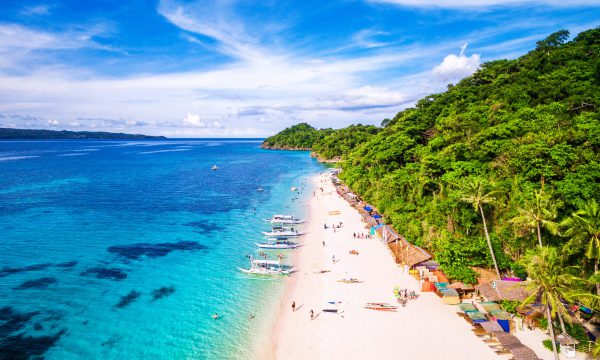
The DOT has proposed a PHP3.52 billion budget for 2022 to support its plans and programmes, as well as a PHP63.71 million allocation for the Intramuros Administration and PHP203.79 million for the National Parks Development Committee.
The plan calls for more green tourism lanes first for domestic tourists in early 2022 once the Covid-19 situation in the Philippines stabilises. International travel should follow based on the country’s vaccination programme and stabilising Covid-19. Like its neighbours in ASEAN, the country is looking at ways to live with Covid-19 and establish policies for tourism that are not conditional on achieving zero virus outbreaks, but so far, there are no clear indicators on when the Philippines will fully open to vaccinated international travellers.
“As international borders start to open, the key, strategic and opportunity markets will be engaged and green lanes explored in preparation for revenge travel,” Romulo-Puyat said.
Romulo-Puyat said the DOT’s policy direction banks on the reformulated National Tourism Development Plan (NTDP) for 2016 to 2022, which has a three-pronged thrust of promoting safe, fun, and competitive tourism; pursuing sustainable, inclusive, and resilient tourism; and strengthening governance and destination management.
The DOT has also updated its Tourism Response and Recovery Plan (TRRP) with the main objective of mitigating the impact of the pandemic on the tourism industry.
She said this would guide the department and stakeholders in ensuring the protection of jobs and safety of travel workers, visitors, and communities, as well as support for tourism enterprises.
Among others, it will help rebuild confidence and growing demand in domestic and foreign markets.
“Under the Tourism Standards and Enforcement Program, we shall continue to improve service standards and restore confidence to travel, develop, and enforce tourism standards that are at par with global best practices,” she said.
Before the pandemic, the tourism industry contributed PHP2.51 trillion, or nearly 13%, to the country’s Gross Domestic Product. This dropped to PHP973.31 billion in 2020 at the height of the health crisis.
Based on the World Tourism Barometer report of the United Nations World Tourism Organization issued in May, the global travel industry suffered a decline of 72.9% in international visitor arrivals in 2020.
The Philippines registered a much steeper 82% slide from 8.26 million tourist arrivals in 2019 to just 1.48 million in 2020.
“Despite the challenges and limitations in 2020 and 2021, the DOT supports efforts to keep the tourism industry afloat while laying the groundwork for the industry’s recovery,” Romulo-Puyat said.
She said the DOT is focused heavily on providing immediate response to those displaced by the pandemic.
As of 26 August, Romulo-Puyat reported DOT had conducted 352 training courses for industry stakeholders with 19,871 participants.
“During the industry’s downtime, we were able to reskill, upskill, and retool the tourism stakeholders with the health and safety protocols and operations under a new normal environment,” she said.
Further, 44 new tourism circuits were established by the department, in addition to the 71 that are still undergoing development.
(Source: PNA)
RELATED ARTICLES
Colin hastings: big chili legend passes, thai cabinet reshuffle after seven months, pal resumes flights to basco.

Description
Publications.
Tourism is one of the world's fastest growing industries and an important source of foreign exchange and employment, while being closely linked to the social, economic, and environmental well-being of many countries, especially developing countries. Maritime or ocean-related tourism, as well as coastal tourism, are for example vital sectors of the economy in small island developing States (SIDS) and coastal least developed countries (LDCs) (see also: The Potential of the Blue Economy report as well as the Community of Ocean Action on sustainable blue economy).
The World Tourism Organization defines sustainable tourism as “tourism that takes full account of its current and future economic, social and environmental impacts, addressing the needs of visitors, the industry, the environment and host communities".
Based on General assembly resolution 70/193, 2017 was declared as the International Year of Sustainable Tourism for Development.
In the 2030 Agenda for Sustainable Development SDG target 8.9, aims to “by 2030, devise and implement policies to promote sustainable tourism that creates jobs and promotes local culture and products”. The importance of sustainable tourism is also highlighted in SDG target 12.b. which aims to “develop and implement tools to monitor sustainable development impacts for sustainable tourism that creates jobs and promotes local culture and products”.
Tourism is also identified as one of the tools to “by 2030, increase the economic benefits to Small Island developing States and least developed countries” as comprised in SDG target 14.7.
In the Rio+20 outcome document The Future We want, sustainable tourism is defined by paragraph 130 as a significant contributor “to the three dimensions of sustainable development” thanks to its close linkages to other sectors and its ability to create decent jobs and generate trade opportunities. Therefore, Member States recognize “the need to support sustainable tourism activities and relevant capacity-building that promote environmental awareness, conserve and protect the environment, respect wildlife, flora, biodiversity, ecosystems and cultural diversity, and improve the welfare and livelihoods of local communities by supporting their local economies and the human and natural environment as a whole. ” In paragraph 130, Member States also “call for enhanced support for sustainable tourism activities and relevant capacity-building in developing countries in order to contribute to the achievement of sustainable development”.
In paragraph 131, Member States “encourage the promotion of investment in sustainable tourism, including eco-tourism and cultural tourism, which may include creating small- and medium-sized enterprises and facilitating access to finance, including through microcredit initiatives for the poor, indigenous peoples and local communities in areas with high eco-tourism potential”. In this regard, Member States also “underline the importance of establishing, where necessary, appropriate guidelines and regulations in accordance with national priorities and legislation for promoting and supporting sustainable tourism”.
In 2002, the World Summit on Sustainable Development in Johannesburg called for the promotion of sustainable tourism development, including non-consumptive and eco-tourism, in Chapter IV, paragraph 43 of the Johannesburg Plan of Implementation.
At the Johannesburg Summit, the launch of the “Sustainable Tourism – Eliminating Poverty (ST-EP) initiative was announced. The initiative was inaugurated by the World Tourism Organization, in collaboration with UNCTAD, in order to develop sustainable tourism as a force for poverty alleviation.
The UN Commission on Sustainable Development (CSD) last reviewed the issue of sustainable tourism in 2001, when it was acting as the Preparatory Committee for the Johannesburg Summit.
The importance of sustainable tourism was also mentioned in Agenda 21.
For more information and documents on this topic, please visit this link
UNWTO Annual Report 2016
In December 2015, the United Nations General Assembly declared 2017 as the International Year of Sustainable Tourism for Development. This is a unique opportunity to devote a year to activities that promote the transformational power of tourism to help us reach a better future. This important cele...
UNWTO Annual Report 2015
2015 was a landmark year for the global community. In September, the 70th Session of the United Nations General Assembly adopted the Sustainable Development Goals (SDGs), a universal agenda for planet and people. Among the 17 SDGs and 169 associated targets, tourism is explicitly featured in Goa...
Emerging Issues for Small Island Developing States
The 2012 UNEP Foresight Process on Emerging Global Environmental Issues primarily identified emerging environmental issues and possible solutions on a global scale and perspective. In 2013, UNEP carried out a similar exercise to identify priority emerging environmental issues that are of concern to ...
Transforming our World: The 2030 Agenda for Sustainable Development
This Agenda is a plan of action for people, planet and prosperity. It also seeks to strengthen universal peace in larger freedom, We recognize that eradicating poverty in all its forms and dimensions, including extreme poverty, is the greatest global challenge and an indispensable requirement for su...
Towards Measuring the Economic Value of Wildlife Watching Tourism in Africa
Set against the backdrop of the ongoing poaching crisis driven by a dramatic increase in the illicit trade in wildlife products, this briefing paper intends to support the ongoing efforts of African governments and the broader international community in the fight against poaching. Specifically, this...
Status and Trends of Caribbean Coral Reefs: 1970-2012
Previous Caribbean assessments lumped data together into a single database regardless of geographic location, reef environment, depth, oceanographic conditions, etc. Data from shallow lagoons and back reef environments were combined with data from deep fore-reef environments and atolls. Geographic c...
15 Years of the UNWTO World Tourism Network on Child Protection: A Compilation of Good Practices
Although it is widely recognized that tourism is not the cause of child exploitation, it can aggravate the problem when parts of its infrastructure, such as transport networks and accommodation facilities, are exploited by child abusers for nefarious ends. Additionally, many other factors that contr...
Natural Resources Forum: Special Issue Tourism
The journal considers papers on all topics relevant to sustainable development. In addition, it dedicates series, issues and special sections to specific themes that are relevant to the current discussions of the United Nations Commission on Sustainable Development (CSD)....
Thailand: Supporting Sustainable Development in Thailand: A Geographic Clusters Approach
Market forces and government policies, including the Tenth National Development Plan (2007-2012), are moving Thailand toward a more geographically specialized economy. There is a growing consensus that Thailand’s comparative and competitive advantages lie in amenity services that have high reliance...
Natural Resources Forum, a United Nations Sustainable Development Journal (NRF)
Natural Resources Forum, a United Nations Sustainable Development Journal, seeks to address gaps in current knowledge and stimulate relevant policy discussions, leading to the implementation of the sustainable development agenda and the achievement of the Sustainable...
Road Map on Building a Green Economy for Sustainable Development in Carriacou and Petite Martinique, Grenada
This publication is the product of an international study led by the Division for Sustainable Development (DSD) of the United Nations Department of Economic and Social Affairs (UNDESA) in cooperation with the Ministry of Carriacou and Petite Martinique Affairs and the Ministry of Environment, Foreig...
UN Ocean Conference 2025
Our Ocean, Our Future, Our Responsibility “The ocean is fundamental to life on our planet and to our future. The ocean is an important source of the planet’s biodiversity and plays a vital role in the climate system and water cycle. The ocean provides a range of ecosystem services, supplies us with
UN Ocean Conference 2022
The UN Ocean Conference 2022, co-hosted by the Governments of Kenya and Portugal, came at a critical time as the world was strengthening its efforts to mobilize, create and drive solutions to realize the 17 Sustainable Development Goals by 2030.
58th Session of the Commission for Social Development – CSocD58
22nd general assembly of the united nations world tourism organization, world tourism day 2017 official celebration.
This year’s World Tourism Day, held on 27 September, will be focused on Sustainable Tourism – a Tool for Development. Celebrated in line with the 2017 International Year of Sustainable Tourism for Development, the Day will be dedicated to exploring the contribution of tourism to the Sustainable Deve
World Tourism Day 2016 Official Celebration
Accessible Tourism for all is about the creation of environments that can cater for the needs of all of us, whether we are traveling or staying at home. May that be due to a disability, even temporary, families with small children, or the ageing population, at some point in our lives, sooner or late
4th Global Summit on City Tourism
The World Tourism Organisation (UNWTO) and the Regional Council for Tourism of Marrakesh with support of the Government of Morroco are organizing the 4th Global Summit on City Tourism in Marrakesh, Morroco (9-10 December 2015). International experts in city tourism, representatives of city DMOs, of
2nd Euro-Asian Mountain Resorts Conference
The World Tourism Organisation (UNWTO) and Ulsan Metropolitan City with support of the Government of the Republic of Korea are organizing the 2nd Euro-Asian Mountain Resorts Conference, in Ulsan, Republic of Korea (14 - 16 October 2015). Under the title “Paving the Way for a Bright Future for Mounta
21st General Assembly of the United Nations World Tourism Organization
Unwto regional conference enhancing brand africa - fostering tourism development.
Tourism is one of the Africa’s most promising sectors in terms of development, and represents a major opportunity to foster inclusive development, increase the region’s participation in the global economy and generate revenues for investment in other activities, including environmental preservation.
- January 2017 International Year of Tourism In the context of the universal 2030 Agenda for Sustainable Development and the Sustainable Development Goals (SDGs), the International Year aims to support a change in policies, business practices and consumer behavior towards a more sustainable tourism sector that can contribute to the SDGs.
- January 2015 Targets 8.9, 12 b,14.7 The 2030 Agenda for Sustainable Development commits Member States, through Sustainable Development Goal Target 8.9 to “devise and implement policies to promote sustainable tourism that creates jobs and promotes local culture and products”. The importance of sustainable tourism, as a driver for jobs creation and the promotion of local culture and products, is also highlighted in Sustainable Development Goal target 12.b. Tourism is also identified as one of the tools to “increase [by 2030] the economic benefits to Small Island developing States and least developed countries”, through Sustainable Development Goals Target 14.7.
- January 2012 Future We Want (Para 130-131) Sustainable tourism is defined as a significant contributor “to the three dimensions of sustainable development” thanks to its close linkages to other sectors and its ability to create decent jobs and generate trade opportunities. Therefore, Member States recognize “the need to support sustainable tourism activities and relevant capacity-building that promote environmental awareness, conserve and protect the environment, respect wildlife, flora, biodiversity, ecosystems and cultural diversity, and improve the welfare and livelihoods of local communities” as well as to “encourage the promotion of investment in sustainable tourism, including eco-tourism and cultural tourism, which may include creating small and medium sized enterprises and facilitating access to finance, including through microcredit initiatives for the poor, indigenous peoples and local communities in areas with high eco-tourism potential”.
- January 2009 Roadmap for Recovery UNWTO announced in March 2009 the elaboration of a Roadmap for Recovery to be finalized by UNWTO’s General Assembly, based on seven action points. The Roadmap includes a set of 15 recommendations based on three interlocking action areas: resilience, stimulus, green economy aimed at supporting the tourism sector and the global economy.
- January 2008 Global Sustainable Tourism Criteria The Global Sustainable Tourism Criteria represent the minimum requirements any tourism business should observe in order to ensure preservation and respect of the natural and cultural resources and make sure at the same time that tourism potential as tool for poverty alleviation is enforced. The Criteria are 41 and distributed into four different categories: 1) sustainability management, 2) social and economic 3) cultural 4) environmental.
- January 2003 1st Int. Conf. on Climate Change and Tourism The conference was organized in order to gather tourism authorities, organizations, businesses and scientists to discuss on the impact that climate change can have on the tourist sector. The event took place from 9 till 11 April 2003 in Djerba, Tunisia.
- January 2003 WTO becomes a UN specialized body By Resolution 453 (XV), the Assembly agreed on the transformation of the WTO into a United Nations specialized body. Such transformation was later ratified by the United Nations General Assembly with the adoption of Resolution A/RES/58/232.
- January 2002 World Ecotourism Summit Held in May 2002, in Quebec City, Canada, the Summit represented the most important event in the framework of the International Year of Ecosystem. The Summit identified as main themes: ecotourism policy and planning, regulation of ecotourism, product development, marketing and promotion of ecotourism and monitoring costs and benefits of ecotourism.
- January 1985 Tourism Bill of Rights and Tourist Code At the World Tourism Organization Sixth Assembly held in Sofia in 1985, the Tourism Bill of Rights and Tourist Code were adopted, setting out the rights and duties of tourists and host populations and formulating policies and action for implementation by states and the tourist industry.
- January 1982 Acapulco Document Adopted in 1982, the Acapulco Document acknowledges the new dimension and role of tourism as a positive instrument towards the improvement of the quality of life for all peoples, as well as a significant force for peace and international understanding. The Acapulco Document also urges Member States to elaborate their policies, plans and programmes on tourism, in accordance with their national priorities and within the framework of the programme of work of the World Tourism Organization.
Department of Tourism

Republic of the Philippines
Key officials.
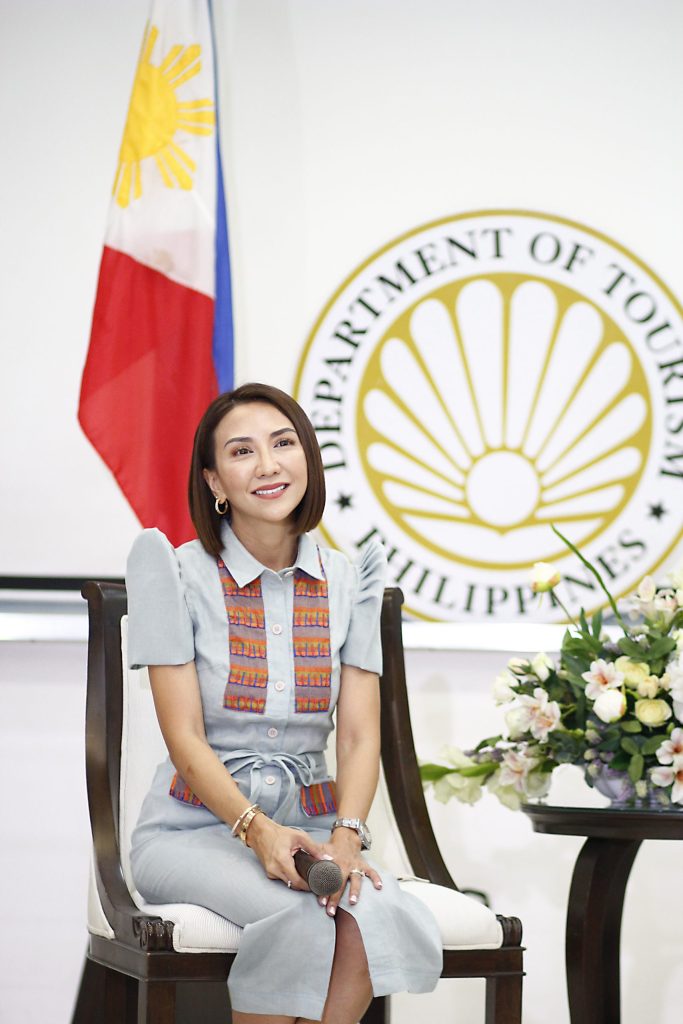
hon. Maria Esperanza Christina Garcia Frasco
Department secretary.
Maria Esperanza Christina Garcia Frasco (born December 25, 1981) is the current Secretary of the Department of Tourism after being appointed by President Ferdinand “Bongbong” Marcos Jr. in 2022, and the youngest member of the Cabinet so far. She is a lawyer, having graduated from Ateneo Law.
The incoming Secretary of Tourism is the newly-reelected Mayor of Liloan, Cebu. Her transformational leadership has fostered Liloan’s development towards sustainability, livability, and innovation with aggressive infrastructure development and social protection programs earning awards for Liloan as the Top Model Municipality and Most Resilient Municipality in the Philippines. Under her administration, Liloan now has one of the largest educational scholarship programs in the country, with yearround arts, culture, and sports tourism programs. Throughout the challenges of the pandemic and the super typhoon that recently devastated Cebu, she has led Liloan’s recovery and resurgence towards becoming the LGU with the highest growth rate in Cebu. Under her leadership, Liloan has the distinction of being a four-time recipient of the highest audit rating given by the Commission on Audit, and it has received more than 40 good governance awards and citations from local and national award-giving bodies. In 2021, she was awarded the Presidential Lingkod Bayan Regional Award by the Civil Service Commission in its Search for Outstanding Government Workers. She was also ranked the Top Performing Mayor in Central Visayas, ranking number 1 among all Municipal Mayors in the entire Region 7. She is the first woman President of the League of Municipalities of the Philippines Cebu, and the National Vice President of the League of Municipalities. Prior to entering public service, she worked for Romulo Law practicing international arbitration and commercial litigation. She was also a Professor at the University of San Carlos College of Law. She was appointed by Vice President Sara Duterte as her Spokesperson for the 2022 National Elections.
- Office of the Secretary
- Internal Audit Service
- LEGISLATIVE LIAISON UNIT

- OFFICE OF SPECIAL CONCERNS
- ADMINISTRATION AND FINANCE
- PLANNING SERVICE
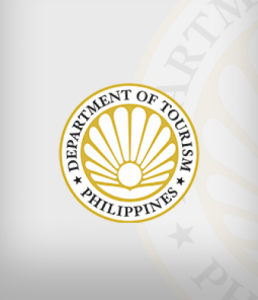
The Philippines is a land rich in natural resources, scenic locales, and friendly smiles. Here, everybody is welcome to be part of the fun – from the captivating coastlines to the creative native crafts, to the unique gastronomic experience, you will find the kind of fun that is uniquely yours.
Quick Links
Accreditations Tourism Attractions Trainings News and Events
Governor Pack Road Baguio City, Philippines, 2600
(074) 309 8204
Visitors Counter

- Open Data Portal
- Official Gazette
- Office of the President
- Sandiganbayan
- Senate of the Philippines
- House of Representatives
- Department of Health
- Department of Finance
- Supreme Court
- Court of Appeals
- Court of Tax Appeals
- Judicial Bar and Council
- Bureau of Internal Revenue
- Bureau of Customs
- Bureau of Treasury
- Bureau of Local Government Finance
- AnnualPerformancePlan
#ResponsibleTraveller Tips
#TourismRecovery
- Tourism Sector Master Plan
- Approved Norms and Standards for the Safe Operations of Tourism Sector in the context of the Coronavirus COVID-19 and beyond
- Tourism Sector Recovery Plan
Latest Publications
(hidden) event, (hidden) tweets by department of tourism, highlights.
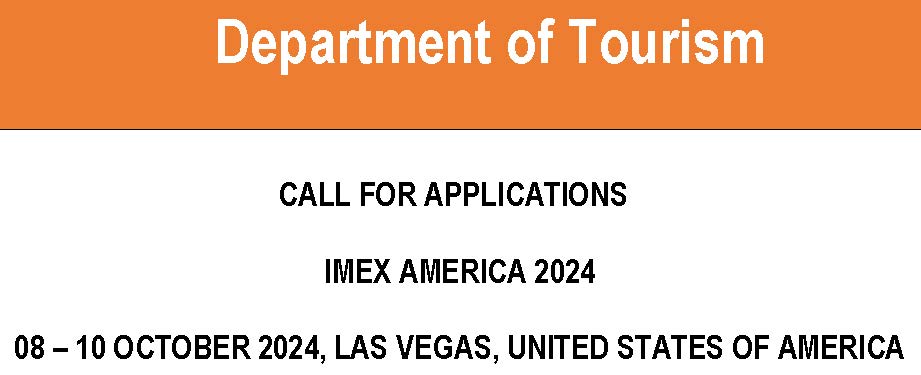
Bojanala March 2024
- Skip to main content
- Skip to footer
AgriLife Today
Texas A&M AgriLife's digital magazine and newsroom
New professor brings behavioral and social science perspective to Department of Hospitality, Hotel Management and Tourism
Gip background in tourism, organizational leadership and instruction will benefit students.
January 9, 2024 - by Paul Schattenberg
With a diverse background in the tourism industry and college-level instruction, Robert “Rob” Gip, Ph.D., brings new perspectives on hospitality and tourism leadership to his position as an assistant professor in the Department of Hospitality, Hotel Management and Tourism in the Texas A&M College of Agriculture and Life Sciences , Bryan-College Station.

Gip is integrating his research and teaching interests to benefit the department and its students across the domains of human resources management, organizational behavior, leadership, employee health and well-being, and cross-cultural and community studies.
“We are fortunate to have recruited a talent such as Dr. Gip into our department who brings depth of knowledge in the behavioral and social sciences, public administration and hospitality management,” said Brian King, Ph.D., head of the Department of Hospitality, Hotel Management and Tourism. “He is providing the department with new perspectives and insights into hospitality and tourism leadership, particularly about how psychological safety, knowledge sharing and proactive work behaviors contribute to service organizations.”
Gip earned his doctorate in hospitality administration from the Conrad N. Hilton College of Global Hospitality Leadership at the University of Houston. He earned a master’s degree in hospitality and tourism management, a bachelor’s degree in interdisciplinary studies with a focus on behavioral and social sciences, and a certificate in event management, all from Rosen College of Hospitality Management at the University of Central Florida, Orlando.
Experience in service and hospitality industries
Gip’s early professional experience included roles as assistant cafe and bakery manager and day spa manager. After this, he was a logistics coordinator at Lowe & Behold in Orlando, a golf attendant at Disney’s Magnolia Golf Course, an event concierge at Hyatt Orlando and a human services worker at Tacachale Developmental Disability Center in Gainesville.
He said a common thread through all of these experiences was his desire to help others, develop a positive work environment, and to identify and fulfill client needs.
“Throughout my industry tenure, my goal has consistently been to ensure that hospitality and tourism organizations prioritize the well-being and value of guests but, more importantly, their employees, as this directly affects their ability to provide high-quality service,” Gip said.
Gip said he is appreciative of the warm welcome and support he has received from members of the department who are renowned in their respective fields and roles.
“The support I’ve received from the department, the College of Agriculture and Life Sciences and Texas A&M in general has been invaluable, and I hope to reflect and embody this support in my research and teaching,” he said. “I plan to use this opportunity to enhance my research, teaching and service with the goal of adding meaningful contributions to the already impressive track record of achievements of the department.”
Hospitality and tourism teaching experience
At the Rosen College of Hospitality Management, Gip was a teaching assistant for multiple undergraduate courses, including Introduction to Hospitality and Tourism, Hospitality and Tourism Marketing and Guest Services Management. He also taught undergraduate human resource management courses for hybrid in-person and online classroom sessions at the Conrad N. Hilton College of Global Hospitality Leadership.
At Texas A&M, he is scheduled to teach Global Communities and Diverse Populations in Hospitality and Tourism in the spring.
‘My teaching philosophy revolves around creating a dynamic classroom community where knowledge is shared between students and myself,” he said. “I aim to blend engaging content with adaptable teaching methods to foster motivation through student-centered project-based learning that promotes engagement and a sense of fun throughout the class.”
Gip said an important goal in his teaching will be to recognize and respect individual differences that can provide new perspectives for classmates and influence student interactions throughout their academic and professional careers.
“This approach promotes fairness, cohesion, reciprocity and honesty in the educator-student relationship and among students, which enhances their education and better prepares them for hospitality careers,” Gip said “I aspire to make a positive impact and be a part of each student’s success story.”
Further academic activities and affiliations
In the capacity of invited lecturer or presenter, Gip has shared his recreation and tourism related research on reliability, validity, leadership and effective employee performance management.
He has refereed numerous journal articles and is an editorial board member for the international journal Tourism, Culture and Communication . He also serves as an ad hoc reviewer for the International Journal of Hospitality Management , International Journal of Hospitality and Tourism Administration , Journal of Hospitality and Tourism Management and International Journal of Contemporary Hospitality Managemen t .
At the University of Central Florida, Gip was a member of the National Society of Leadership and Success and the National Association for Catering and Events.

Media Inquiries
Laura Muntean , media relations coordinator [email protected] 601.248.1891
Are you interested in this content, need high resolution photos or assistance getting connected with an expert to learn more? Please contact our media relations team at [email protected] .
You May Also Like
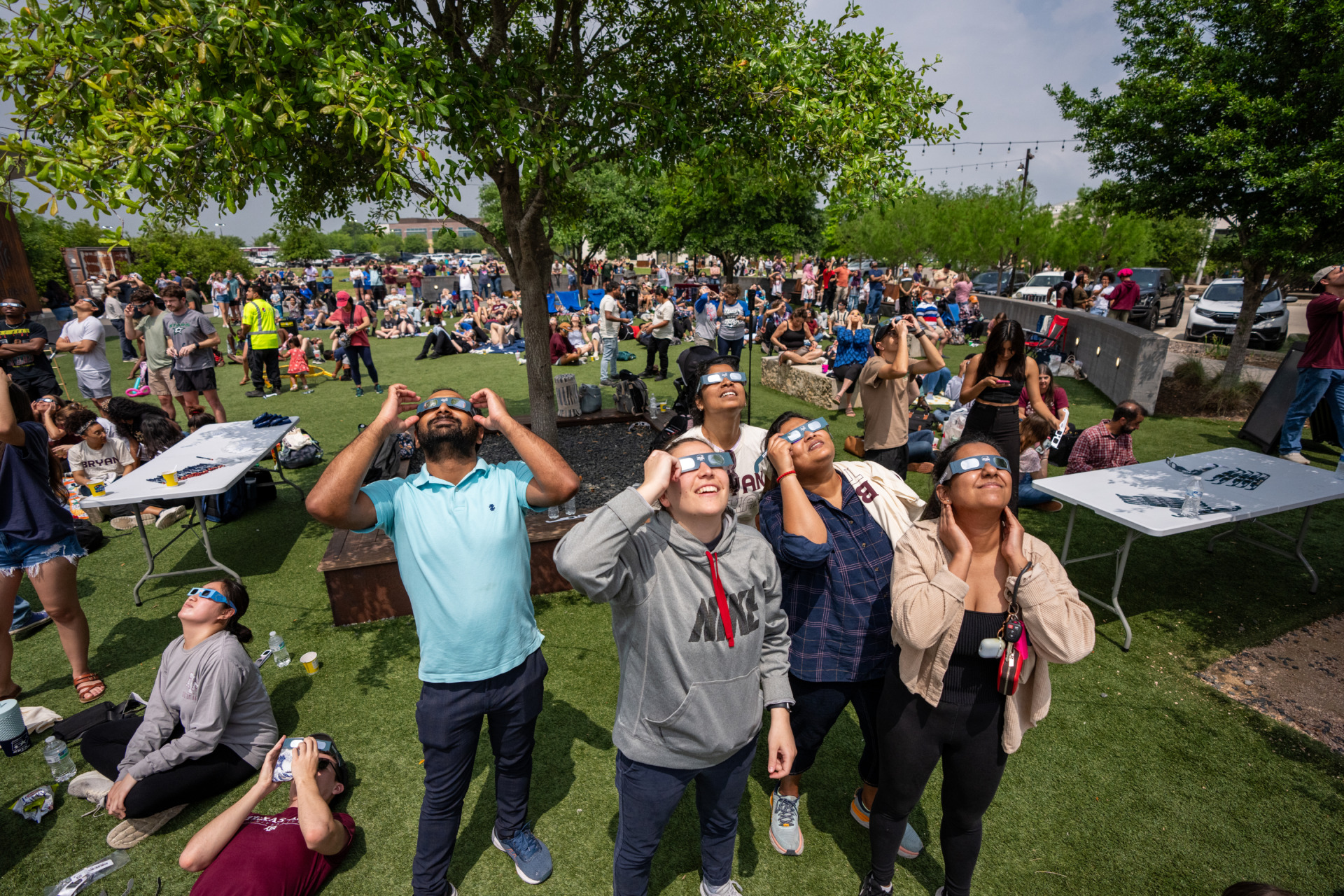
Texas A&M students lend their expertise to solar eclipse watch party in Bryan
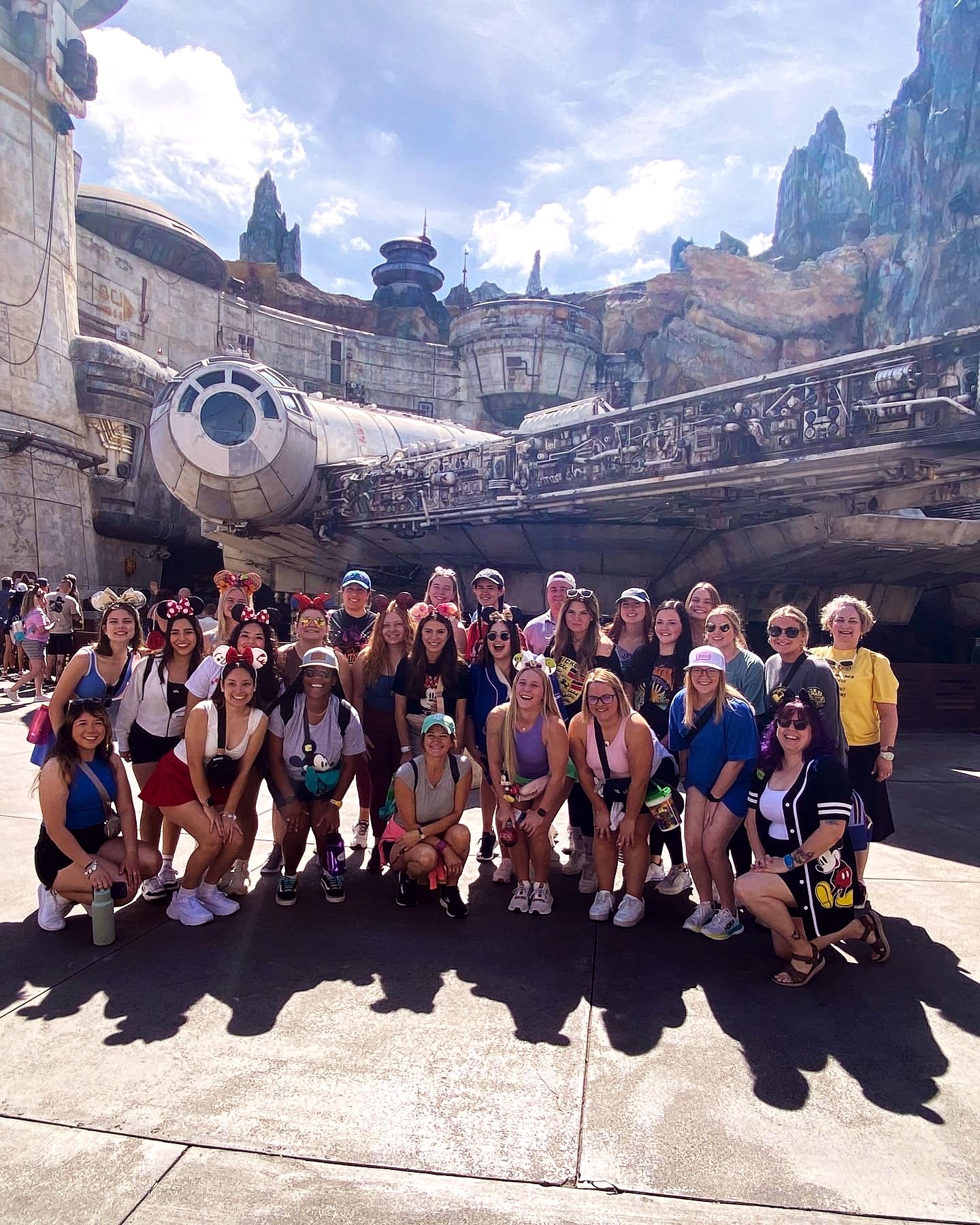
Texas A&M students let their imaginations roam free during Disney Week
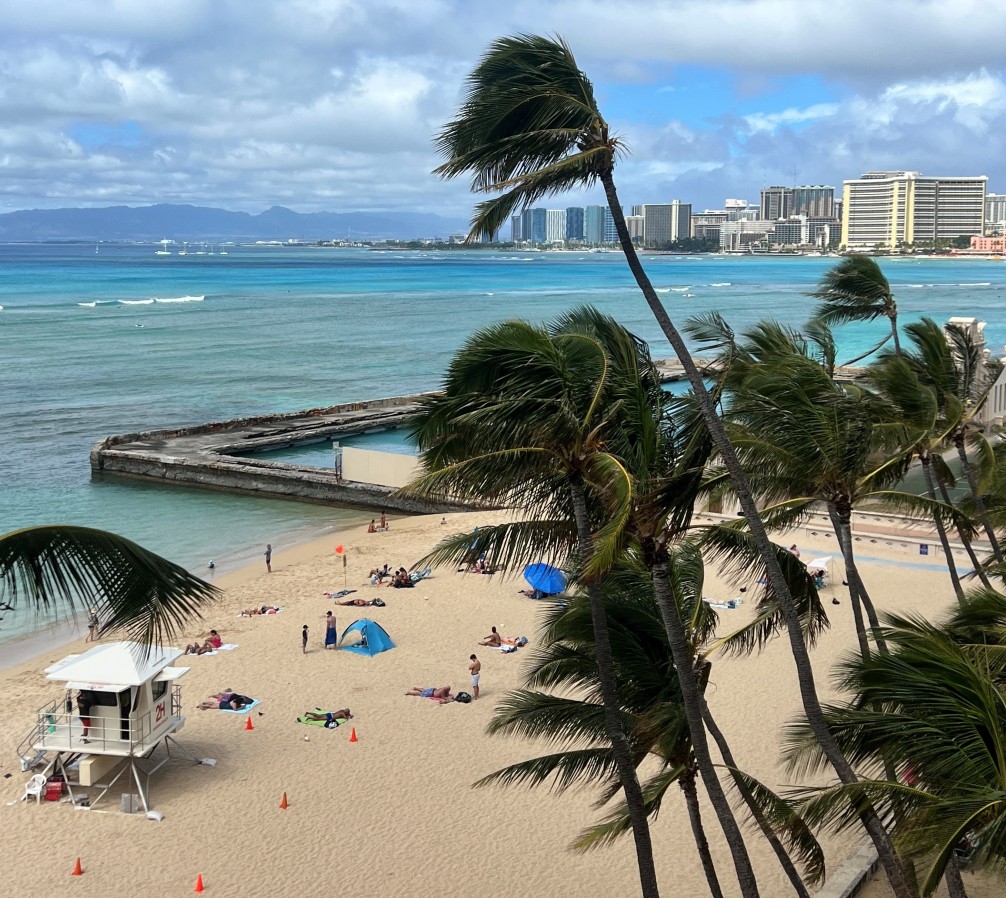
Spring break safely: Having a more trouble-free trip
A member of Texas A&M AgriLife
Texas A&M AgriLife Extension Service | Texas A&M AgriLife Research | Texas A&M Forest Service | Texas A&M AgriLife Veterinary Medical Diagnostic Lab | College of Agriculture & Life Sciences
Texas A&M AgriLife
Phone: (979) 803-1287 [email protected]
More Information
- Resources for Press and Media
- Story Suggestion
Find Us on Social Media
About texas a&m university.

IMAGES
COMMENTS
The Department of Tourism (DOT) is the primary planning, implementing, and regulatory government agency tasked to develop and promote the Philippine tourism industry, both domestic and international. The agency is also tasked to manage, operate, and maintain all government-owned tourism facilities. It is the sole owner of all Philippine tourism ...
A Philippine Tourism Commission was created under the unified Trade and Tourism Department to oversee the growth of the tourism industry as a source of economic benefit for the country. In 1973, President Ferdinand Marcos created a new cabinet-level Department of Tourism (DOT) by splitting the Department of Trade and Tourism into two separate ...
1973. 1973. 1973. Established in 1973, the Department of Tourism (DOT) is the Philippines' executive office responsible for the regulation and promotion of the Philippine tourism industry. DOT's mission is to encourage, promote, and develop tourism as a major socio-economic activity to generate foreign currency and local employment ...
Updated: December 6, 2023. The Department of Tourism (DOT) functions as the executive department of the Philippine government, with a critical responsibility for regulating the nation's tourism industry. Its primary objective is to promote the Philippines as an appealing and captivating tourist destination on the global stage.
The Department of Tourism (DOT), which started as. tourist organization in 1950 and created as the Board of Travel and Tourist Industry in 1956, was established by virtue of Presidential Decree No. 189 dated May 11, 1973. It was reorganized structurally and functionally under Executive Order (EO) No.120 dated January 30, 1987, with.
Profile and History. In 1952, through Republic Act No. 710, the Philippine Tourist and Travel Association (PTTA) was created to bring together all organizations and entities that cater to travel and tourism. By 1956 through R.A. 1478, the Board of Travel and Tourist Industry (BTTI) was created under the Department of Commerce and Industry (DCI ...
dot chief: philippines receives 2 million international visitors; tourism receipts hit php158 billion in the first three months of 2024 April 25, 2024 Manila, Philippines—The Philippines has already received over two million international visitors this month, the Department of Tourism (DOT) reported...
2006: The Department of Tourism launched the "WOW Philippines" campaign, which focused on the country's diverse tourist destinations and unique experiences. 2007: The Holiday Economics was launched. A government program wherein workers would have the chance to have long holidays which allowed them to take longer vacations. No-work holidays that ...
The Department of Tourism (DOT) is mandated to encourage, promote, and develop tourism as a major socio-economic activity to generate foreign currency and local employment and to spread the benefits of tourism to a wider segment of the population with the support, assistance, and cooperation of both the private and public sectors. ...
tourism, the act and process of spending time away from home in pursuit of recreation, relaxation, and pleasure, while making use of the commercial provision of services.As such, tourism is a product of modern social arrangements, beginning in western Europe in the 17th century, although it has antecedents in Classical antiquity.. Tourism is distinguished from exploration in that tourists ...
The main tourism organization in the Philippines is the Department of Tourism (DOT), which is responsible for promoting, developing, and regulating the Philippine tourism industry. Introduction Background of Tourism in the Philippines The Philippines, an archipelago comprising more than 7,000 islands, has a rich history of tourism, attracting visitors with its stunning natural landscapes, vibrant
Cordillera Administrative Region. as told by every river, every mountain, every tree. To be lost under the canopy and in the fragrance of a pine forest, in the current of crystalline waters, in the rhythm of gongs and the harmony of songs that tell our history, to experience serenity as the clouds descend on an ili, to find peace and happiness ...
MANILA, 8 September 2021: The Philippines' Department of Tourism will pursue a 2022 recovery plan with an end goal of a sustainable, resilient, and inclusive tourism industry, the Philippines News Agency reported earlier this week. Secretary Bernadette Romulo-Puyat presented the plan as part of the DOT's proposed 2022 budget to the House of ...
Bernadette Fatima Tecson Romulo-Puyat (born May 14, 1971 [citation needed]) is a Filipino government official, economist, and academic who served as the Secretary of Tourism under the Duterte administration from May 2018 to June 2022, heading the Philippines' Tourism industry through the disruptions caused by the COVID-19 pandemic in the Philippines.She has since been appointed Deputy Governor ...
Mission The Department of Tourism (DOT) shall be the primary government agency charged with the responsibility to encourage, promote, and develop tourism as a major socio-economic activity to generate foreign currency and employment and to spread the benefits of tourism to both the private and public sector. Vision To develop a globally competitive, environmentally sustainable … Mission and ...
Office of the Secretary. Established in 1973, the Department of Tourism (DOT) is the Philippines' executive office responsible for the regulation and promotion of the Philippine tourism industry. DOT's mission is to encourage, promote, and develop tourism as a major socio-economic activity to generate foreign currency and local employment ...
The Tourism Decade is a celebration of the tourism industry's achievements, ten years since Republic Act 9593 was signed into law. Authored by Senator Richard Gordon together with Congressman Edgar Chatto, RA9593 declared tourism to be an indispensable element of the national economy, and an industry of national interest and importance. ...
The Department of Tourism (DOT) logo, represented by a shell, depicts the Philippines as the Pearl of the Orient. The shell has 13 vertical lines representing the 13 regions of the country where unique and beautiful destinations await foreign and local tourists. The curved line at the bottom of the shell symbolizes the smiling face of Filipinos ...
World Heritage Sites; it's an adventure you've. always wanted to take. Beyond smiles and. casual greetings; it's friendship you. weren't expecting. to make. We're excited to share all these and more to the world.
Department of Tourism. Leading sustainable tourism development for inclusive economic growth in South Africa. effective stakeholder communication. Innovative: Leveraging of resources and partnerships to optimise delivery to our stakeholders, and being responsive to change. Ethical (good corporate governance): Encapsulating the principles of ...
Tourism is one of the world's fastest growing industries and an important source of foreign exchange and employment, while being closely linked to the social, economic, and environmental well-being of many countries, especially developing countries. Maritime or ocean-related tourism, as well as coastal tourism, are for example vital sectors of the economy in small island developing States ...
Stay safe and work from home as we bring the fun of the Philippines to your video calls! DOWNLOAD ALL PHOTOS.
hon. Maria Esperanza Christina Garcia Frasco Department Secretary biography Maria Esperanza Christina Garcia Frasco (born December 25, 1981) is the current Secretary of the Department of Tourism after being appointed by President Ferdinand "Bongbong" Marcos Jr. in 2022, and the youngest member of the Cabinet so far. She is a lawyer, having graduated from Ateneo … Key Officials Read More »
In the interest of transparency, I wish to update the public on a matter where I had recently been made aware of a number of irregular payments which were made through South African Tourism's United States of America and South Africa offices for services not rendered.
With a diverse background in the tourism industry and college-level instruction, Robert "Rob" Gip, Ph.D., brings new perspectives on hospitality and tourism leadership to his position as an assistant professor in the Department of Hospitality, Hotel Management and Tourism in the Texas A&M College of Agriculture and Life Sciences, Bryan-College Station.